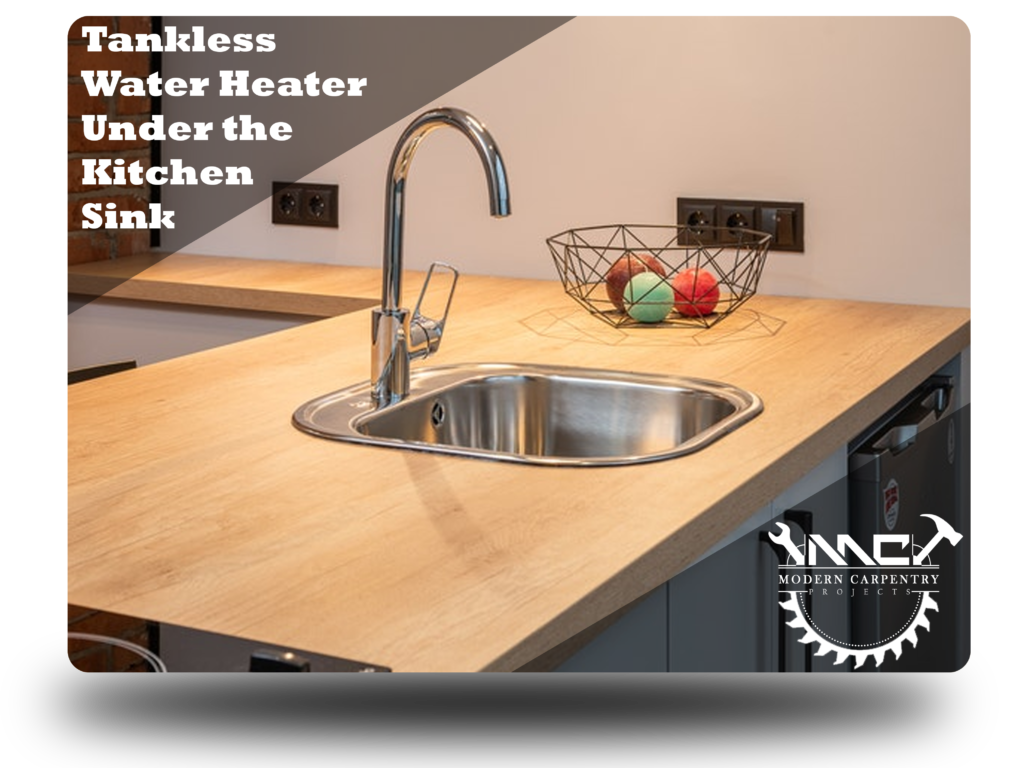Are you interested in how a tankless water heater under the kitchen sink would work? If so then come check out this advice on how you can add this tankless element to your home.
Let’s establish the kitchen expectations
Kitchen remodeling is a hot topic when it comes to a home environment. Kitchen makeover is an exciting matter for ladies as they devote most of their time to the kitchen. We can remodel the kitchen from multiple dimensions: remodeling curtains, wall painting, cupboard designing, kitchen tools, and water heating elements for the kitchen.
The kitchen is a broad discourse, and remodeling is a subjective choice that may vary from individual to individual. However, third-party suggestions may play a role in making the job easy. Leaving other issues aside and taking sanitation of kitchen under consideration, specifically, the question “can you install a tankless water heater under the kitchen sink?”.
Installation of a tankless water heater under a kitchen sink is determined by the height of the sink and the position of the tankless water heater. In general, people know what a tankless water heater is. However, here we want to briefly describe a tankless water heater for convenience to understand its installation under a tankless water heater. Is it possible to install it or not?
A tankless water heater needs gas as fuel to increase the temperature of the water. There is a convoluted tube within the tankless water heater, and just below the tube, there lies a burner. When water flows through the heater’s input, a sincere detects the flow of the water and signals the burner, but it needs a threshold pressure of water. Now, keeping this simple principle in mind, we will answer, “can you install a tankless water heart under a kitchen sink.“
Yes, we can install a tankless water heater under the kitchen sink within a few possible conditions, which are:
- The kitchen must be on height, means on the second floor or third floor.
- Water must be reusable.
- The kitchen should be a home, i.e., casual use
The first condition aims that the kitchen must be on height to have pressure and flow down the floor.
Reusability of water means that water must be in a condition to be used again for washing, cleaning the floor and other substances.
Water from the home kitchen is preferred because water released from the home sink is cleaner compared to commercial kitchens.
Following the above-said conditions, you can install a tankless water heater under the kitchen sink. Installation of a tankless water heater can be done at different positions relative to the sink. These suggestions are made keeping in view hydrodynamics laws. In homes, you can conserve water that comes from the kitchen sink. Let us look at some possible uses where we can reuse kitchen sink water:
- cleaning floors:
You can use hot water for the tankless water heater and the kitchen set up to clean floors and surfaces. Cleaning surfaces with hot water will help save water consumption because cleaning floors need more water than other chores.
- Servicing bikes or cars:
You can use hot water from the kitchen sink for servicing the car or bike. For car and bikes cleaning, we need to wash dust and sand.
- Washing furniture:
In homes, we need to wash furniture though once a year. Sink water heated through a tankless water heater can be utilized for this purpose.
How to connect heater with sink:
connect the sink to the water heater inlet with a “T” connecter. This type of connection will customize your arrangement. By customization, we mean that water inflow to the water heater can be monitored when or how it needs to, like washing utensils that are too oily. Water is not reusable in this instance. You may be able to stop that water flow to the water heater. Similarly, when hot water is not needed, we can change the water flow path opposite the water heater.
Installation Suggestions:
Installation just below the sink:
The first proposition regarding installing a tankless water heater is just below the sink in the kitchen room. Connection to the heater at the said position will need less effort. For input, it just needs a link from the sink outflow.
This installation has advantages which are:
- it is easy to connect the sink with the water heater in a short distance.
- There will be no tension in switching on and off the water heater.
- Since the water heater will be just under the sink, water control will be stress-free.
There are shortcomings of this kind of setup. The water heater below the sink will receive water with low pressure due to insufficient height. Another problem is the danger of gas leakage from the tankless water heater, which may cause an accident. Also, reports show that the installation of tankless water heaters bursts when frequently used. So using a tankless water heater in proximity is dangerous. Your safety is the priority in any case, but using the mentioned setup with caution can avoid danger and accidents.
Installation outside the kitchen:
If you feel unsafe while having a tankless water heater inside the kitchen, here is an alternative: install a heater outside the kitchen on the kitchen wall. Keep in mind that the relative height of the water heater must be less than the sink. Connection is as easy as described in the first suggestion. Do not forget the “T” connecter for customization.
Advantages are:
- Easy control of water flow to the heater
- Easy operation of water heater
- No risk of water heater bursting or any other relevant accident.
Issues related are: first of all, it will need a longer pipe than the first one, creating a lapse of a few seconds between the release of water and switching on of the heater. In this specific setting, the flow of water will be slow. Setup is beneficial when there is frequent use of water. The second issue is that you cannot make multiple connections from the heater because of the steady water movement. But still, it is a safe and best possible solution for saving water.
Installation on the floor below the kitchen:
You can adapt the above methods while dealing with the issues and cautions described above. But if you need safety and high pressure of water, this setting will be more than reasonable.
Install your tankless water heater on the floor wall below the kitchen. Connect kitchen sink with the heater. This connection needs one effort more than the above-described ones. The extra effort it needs is to make a single hole within the roof for pipe connected to the heater’s input. At the same time, you are making hole use efficient tools to avoid damage to the building.
Advantages are:
- There is no risk of an accident.
- Water pressure will be high due to an increase in height.
- The heated water can be used at multiple water taps.
You can face minor issues with this setting. The most frequent problem is that distance to the water heater will increase, and for changing water supply quantity or gas supply, you have to go down a floor which may feel a little burdensome.
Conclusion:
Installing a tankless water heater is a creative idea. Usually, in winters, we need hot water for chores in homes. Kitchen water, under certain circumstances, is reusable—the suggestions made above in the article on how to install a tankless water heater for reusing that water are in some way reasonable. All three methods have their pros and cons and can be used according to the need.
The best and most convenient is the third one which meet the needs of our homes. It has low risk and is more advantageous in since to provide high pressure water. Here I remind again the use of the “T” connecter, which is of utmost importance in connecting kitchen sink with the heater because it will help us control the flow of water to the heater.
We hope you have enjoyed learning just a few of the tips and tricks on how to add a tankless water heater element to your new or renewed kitchen home. Please feel free to follow our channel or stop by on our home page and say hello any time you’d like.
Cheers!









